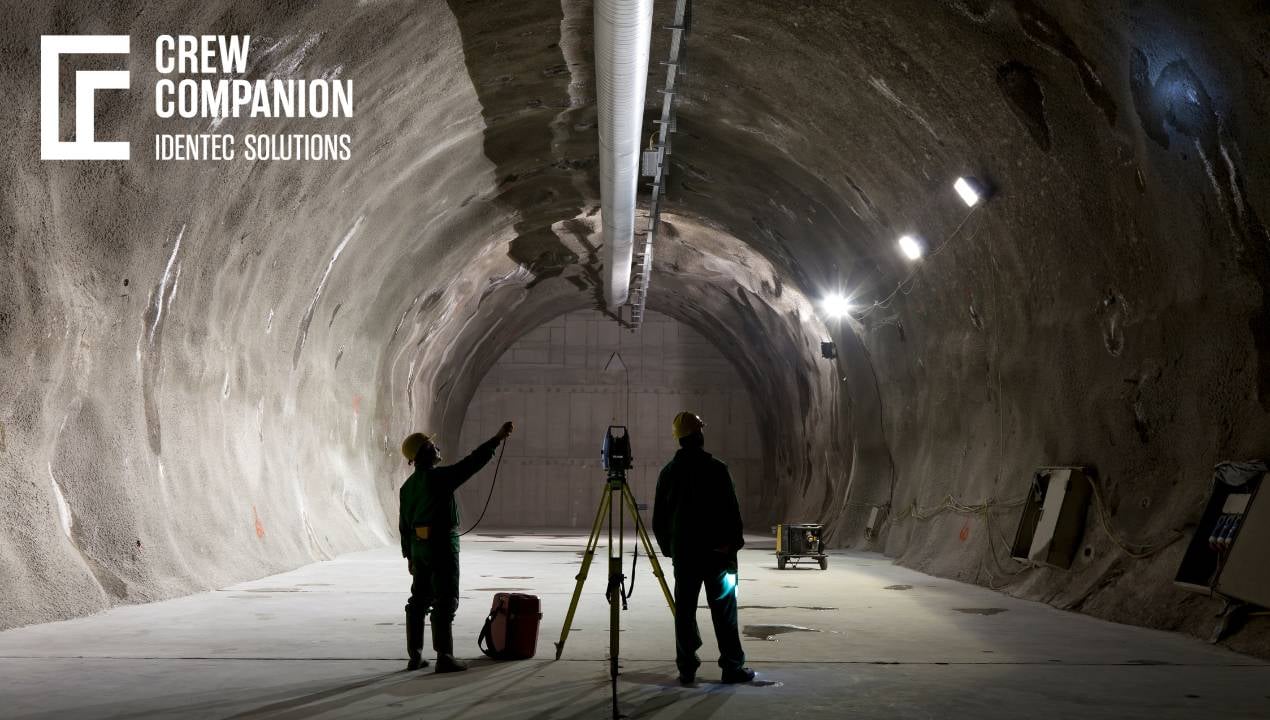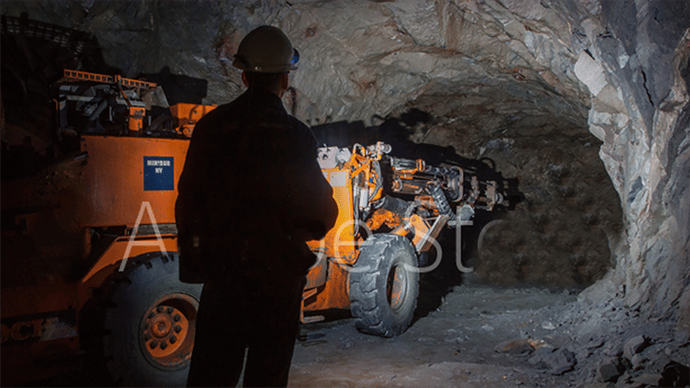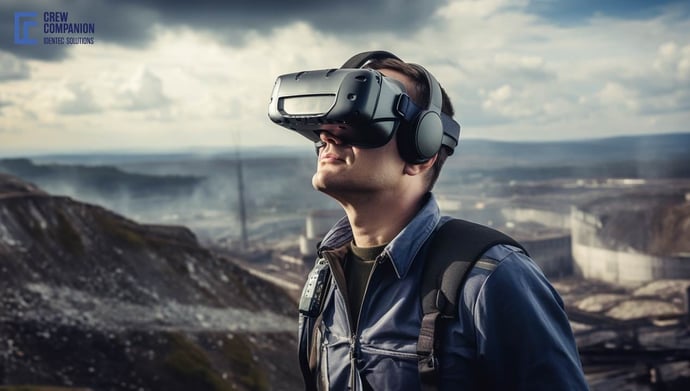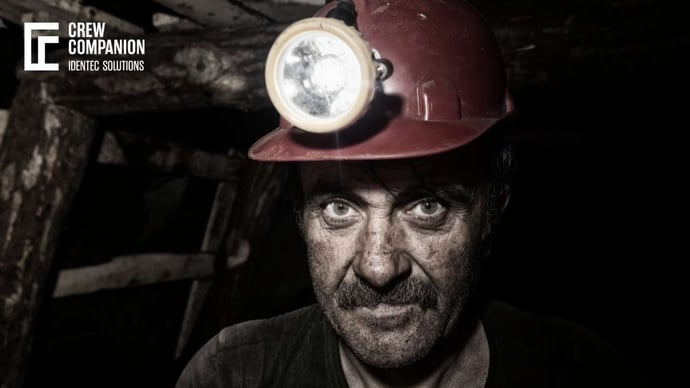Safety For Mining: How to locate underground
| Written by Michal Wozniakowski-Zehenter
Underground mining is one of the most challenging industries due to the hazardous and complex environments involved. Therefore, safety is of utmost importance in mining, and accurate tracking of equipment and personnel plays a crucial role in ensuring safe and efficient operations. Localisation technologies are increasingly used in underground mining to provide real-time data on the location of equipment and personnel.
This blog post will discuss the importance of localisation technologies in enhancing safety in mining operations. Go ahead and learn more!

No video selected
Select a video type in the sidebar.
Is LOCALISATION Important in Mining?
Localisation technologies are key for the transformation and digitalisation of the mining industry, where safety, sustainability and efficiency are all pressing concerns. Those solutions provide critical information to operators, managers, and safety personnel, enabling them to better understand the current situation and take necessary action to prevent accidents and respond quickly in case of emergencies. Those devices and technologies can be used in plenty of ways. By real-time personnel and equipment tracking, rescue teams can improve emergency response and locate people quickly. The system can alert the operator to avoid collisions, reducing the risk of accidents. Underground mining involves many hazards, including exposure to harmful gases and other dangerous conditions. Localisation devices can alert of potential hazards and enable management to take appropriate measures to ensure everything is running safely. Mine operators can also optimise their operations, reducing downtime and increasing efficiency.
As an example, we can take the infamous Chilean Mine disaster from 2010, where 33 miners were trapped for almost 70 days underground, more than two weeks before the first contact was established and information about the condition of the survivors was known. The mine itself didn’t have any localisation system in place, so the search and rescue mission in the caved-in mine was extremely difficult, even to estimate the potential location of the missing crew. An indication of the miners’ last position before communication lines were disrupted would give an operator a better picture and speed up the drilling exploratory boreholes process to better understand the situation. Luckily, all 33 miners were rescued, but it took over two months to finish the operation.
Different technologies are applied to localisation and safety in mining. Depending on the environment, each uses different solutions to protect personnel and machinery utilised in operation. Some of them are more efficient in open pit mines but can still be used to some extent in underground mines.
WIRELESS SENSOR NETWORKS
Wireless Sensor Networks (WSNs) are revolutionising the way we monitor physical and environmental conditions. With a wide range of sensors that can detect temperature, vibration, sound, pressure, motion, or pollutants, WSNs can capture a wealth of data that can be analysed and acted upon in real time. This technology is particularly useful in the mining industry, where it can help prevent accidents and improve safety conditions for workers.
One of the main advantages of WSNs is that they are infrastructure-less, meaning they can be deployed in remote or hazardous locations without needing a wired network connection. Instead, the sensors communicate wirelessly using radio, optical, or infrared solutions, which are robust and less prone to interference. The data is then sent to a main server for further analysis and observation, allowing for quick identification of potential hazards.
Using this technology in mining operations can help reduce the need for personnel to carry out dangerous readings of different devices, such as toxic gas concentration, in areas that might be difficult to reach or unstable. This significantly mitigates the risk of accidents and ensures that workers are always kept safe. Furthermore, WSNs can detect potential extreme hazards such as cave-ins or dam breakages, often leading to the worst mining operations accidents.
In addition, WSNs can also help reduce automation-related incidents and accidents. For example, remotely controlled machinery allows operators to be in a safe spot during excavating and drilling, reducing the risk of falling rocks. Autonomous vehicles like haul trucks equipped with sensors can also avoid collisions leading to severe injuries and damages. The condition of machinery can also be monitored to mitigate risks – tire pressure or brake quality plays a role in maintaining lower accident levels.
For instance, Newcrest Mining integrates around 100,000 machinery sensors and approximately 40 billion records from its global mining sites with Insight's advanced analytics and Industrial Internet software sensors. This enables the prediction of ore levels in crushed bins even when hardware sensors fail. By combining AI and IoT, Newcrest achieves continuous ore level predictions with 85% accuracy. (2)
RADIO FREQUENCY IDENTIFICATION
With the power of radio waves, RFID technology has revolutionised the way we identify and track objects. RFID tags can be easily attached to anything from equipment to vehicles and even people. Readers can scan these tags, which collect valuable information about the attached object. The technology has become an excellent tool for mining companies, allowing them to efficiently monitor the whereabouts of their equipment and vehicles while also deterring theft. Furthermore, these tags can be utilised to keep track of maintenance schedules, enabling mining operations to operate with minimal downtime and maximum efficiency.
What about safety? Using RFID technology to tag employees’ ID badges can effectively manage access to mine sites. By tracking the entry and exit of authorised personnel, companies can enhance safety measures and prevent unauthorised individuals from entering the site. It is crucial to monitor each worker’s location and the whereabouts of rescue and first aid teams (1).
In an accident, this technology can be activated to locate trapped individuals, sound alarms, and implement evacuation protocols. It can guide rescue teams and workers to safe places or operating lifts, stop truck traffic, and halt work affected directly or indirectly by accidents. This system has proven to be highly effective, with instances of quick rescue and aid to injured workers. It can also be leveraged to track the whereabouts of explosives. By doing so, this approach bolsters safety measures, ensuring that these potentially hazardous materials are utilised in the correct location and at the right time.
As with wireless sensor networks, radio frequency identification technology can also be used for proximity warning systems. By adding an RFID tag and antenna to a vehicle, it can now act as a highly effective radar system that can alert drivers to any potential collisions or unsafe situations. Furthermore, a truck with an accompanying RFID reader can provide even more safety measures by emitting sounds and lights to warn drivers of any approaching people or equipment. By utilising sophisticated algorithms that assess the strength of the incoming signal and produce an escalating audio alert, safety zone boundaries can be fine-tuned for optimal protection. A reliable proximity monitoring system necessitates the implementation of an RFID wireless network and appropriate software that can dynamically adapt detection zones, typically spanning distances of 10 to 300 meters.
The technology is widely used by personnel who work alone – the device communicates with a central server that the employer or rescue services can access. In the event of an emergency, the employee can simply push a panic button on the device to send an alert to the server. Moreover, the tracking device is equipped to recognise potentially hazardous situations and automatically alert safety coordinators to trigger a rescue operation for miners' safety.
RTLS
Real-Time Location Systems have revolutionised the way businesses operate, particularly in indoor or underground areas where GPS signals are unreliable. By tracking and monitoring the real-time position of transmitting tags, RTLS enables companies to optimise their operations, improve safety, and reduce the risk of accidents. Triangulation, which uses location sensors to determine the tag’s position within range, is a key feature of RTLS. The system can be based on Bluetooth, Wi-Fi, or UWB transmission, but recent trends favour UWB due to its higher accuracy and reliability, particularly in areas where 2.4GHz frequencies are blocked by obstacles.
One significant advantage of RTLS technology is that it allows for real-time inventory overviews, making tracking and monitoring stock levels straightforward. Additionally, during emergencies, tracking personnel using RTLS can help ensure their safety by allowing for an immediate response to incidents. The system also optimises operations by enabling companies to track and monitor the location of assets, reducing the time and resources required to find them.
However, implementing an RTLS system can be expensive due to hardware, software, and installation costs. Moreover, privacy concerns may arise when tracking personnel’s exact locations, making it crucial for companies to implement appropriate policies to protect employees’ privacy. Poor wireless connectivity can also limit coverage, necessitating additional infrastructure investment to ensure the system works optimally. Despite these challenges, the benefits of RTLS technology make it an invaluable tool for companies seeking to optimise their operations and improve safety.
Do you want to learn more about Risk Management in mining and wearables?
LASER-BASED POSITIONING SYSTEMS
Another technology described today is a laser-based positioning system. With its ability to create a 3D map of the mine, this system has made it easier for mining companies to navigate their way through complex tunnels and avoid potential hazards. In addition, the use of lasers to measure distances is an incredibly precise method that ensures the accuracy of the map created.
The transmitters installed throughout the mine emit laser signals in all directions, allowing for complete site coverage. The signals bounce off the tunnels' walls, floors, and obstacles, providing the necessary data for the network of receivers to detect and measure the time it took for the laser to bounce back. This information is then analysed by specialised software to determine distances and create a highly accurate map of the mine.
As in previous solutions, real-time information on the location is given to the one in charge. First and foremost, yes, you guessed it, in case of an emergency, but also to improve planning and scheduling, which can indirectly improve safety. Having more time to be prepared properly reduces stress and mistakes.
How Does DATA Play Its Role?
Data is the backbone of safety and efficiency when it comes to mining operations. The data collected from various mining technologies is not limited to just real-time data. Internal archives, training materials, observations, and incident data all contribute to the overall data set. However, to complete the system, external data is also necessary, with industry standards and geospatial and weather information being essential. By building an integrated system that considers all of this data, it becomes possible to analyse and identify potential high-risk scenarios in the future. Advanced analytics and artificial intelligence algorithms can search for patterns and correlations to predict potentially dangerous operational scenarios and working groups, allowing preventative measures to be put in place before any incidents occur.
A cross-company exchange of information is needed to truly approach a zero-harm future. This allows for a better understanding of the data and ensures that all stakeholders can work together to prevent any harm to workers or the environment. With a comprehensive and integrated data system, mining operations can be safer, more efficient, and more sustainable.
TAKEAWAY
Mining operations are known to be hazardous, especially when conducted underground. The safety of personnel and equipment is paramount, and mining companies must take necessary steps to ensure optimal safety measures.
Thanks to technological advancements, localisation technologies have helped track personnel and equipment in real time. These solutions are crucial in preventing accidents and improving emergency response times.
Mining companies must be vigilant in selecting the right technology for their operations to ensure maximum safety. Operators must evaluate their needs carefully and invest in the right solution. This way, they can make their operations safer and more efficient, benefiting everyone involved. The benefits include increased efficiency, reduced downtime, and a lower risk of accidents. So, what is the best solution for you?
Dive deeper into one of our core topics: Mining Safety
Glossary
Wireless Network System (WSN) - are networks of spatially distributed, dedicated sensors designed to monitor and record conditions within an environment and transmit collected data to some central hub. Such networks measure several parameters like temperature, sound, pollution levels, humidity, wind, and more.
A WSN consists of "nodes"-anything from a few to hundreds or thousands- with each node in communication with other sensors. Each such node is supposed to contain various components, with common ones including a radio transceiver with an internal antenna or connected to an external antenna; a microcontroller; an electronic circuit for interface with the sensors; an energy source, often a battery or sometimes an in-built type of energy harvesting. (3)
Sources:
(1) Stolba, Miroslav; Jurco, Tomas; Kebo, Vladimir: RFID Technology in Mining Industry. International Multidisciplinary Scientific GeoConference : SGEM; Sofia Vol. 1, : Surveying Geology & Mining Ecology Management (SGEM). (2013): 695-700.
(2) https://www.mining-technology.com/data-insights/analysing-the-innovation-landscape-in-internet-of-things-who-are-the-leading-innovators-in-mine-sensor-network-for-the-mining-industry
(3) https://en.wikipedia.org/wiki/Wireless_sensor_network
Note: This article was updated on the 13th of January 2025

Author
Michal Wozniakowski-Zehenter, Marketing Manager
Michal Wozniakowski-Zehenter is an experienced marketing and project management professional. He spent most of his career on projects with a strong focus on digital marketing and event management. He is a very active voice representing offshore and mining industries through social media channels. Michal writes mainly about offshore oil and gas, renewable energy, mining and tunnelling. Compiling and sharing the knowledge within industries is one of his goals.
Related Articles
Related Product





